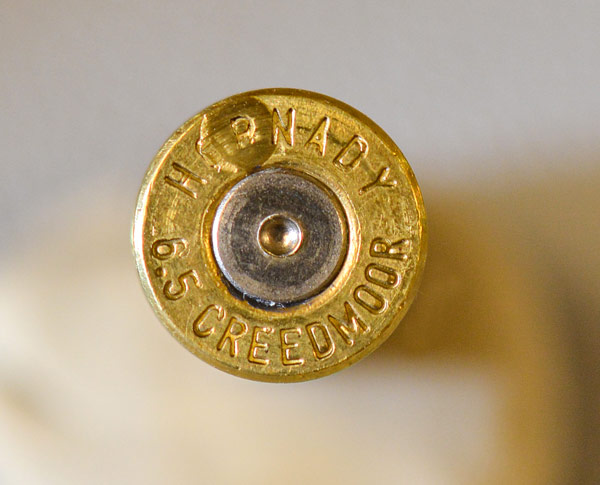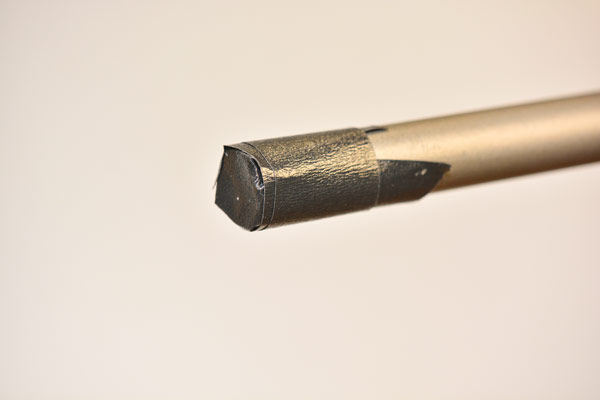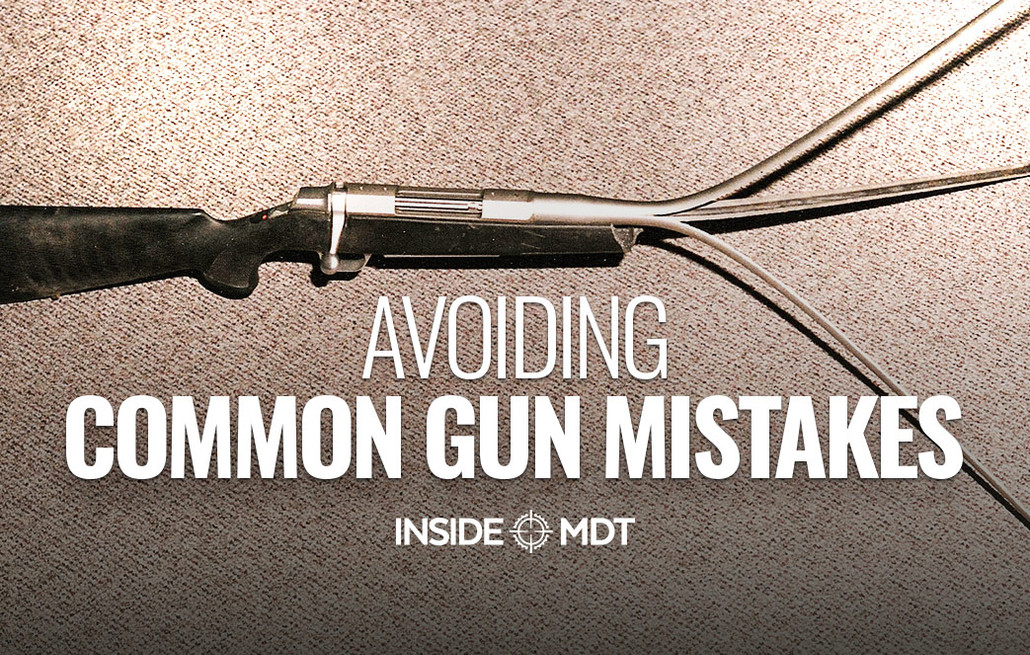Posted by Al Voth on 2023 May 25th
Avoiding Common Gun Mistakes - Inside MDT
It's often said, "There are two kinds of gun owners, those who have had an unintentional discharge and those who are going to have one." It's a sobering proverb, but I think it's a good one, as it shocks us to remember that gun safety is a serious individual responsibility.
A quick search through my memory banks turns up several times I've made avoidable gun mistakes. Besides my screw-ups, I've spent a fair amount of my professional career investigating other people's errors, and the following are some of the ways I've encountered that people can hurt themselves with a gun.
THE WRONG AMMO
The ammunition we put in the chamber of our firearm matters. While I haven't seen anyone killed by the wrong ammo yet, I have seen wrecked guns and nasty injuries. There are huge safety margins built into modern firearms, and for a good reason, as is sometimes demonstrated in the brass bucket at the shooting range I frequent. There, I've found fired cartridge cases revealing someone fired a .300 Winchester Magnum in a rifle chambered for the .300 Weatherby magnum and a .303 Savage in a .303 British rifle. Handgunners aren't immune either, as it's common to find a .40 S&W fired in a .45 Auto or a 9mm Luger fired in a .40 S&W chamber.

Ammo errors from left to right: A .300 Win. Mag fired in a .300 Weatherby Mag., a .303 Savage fired in a .303 British, and a .40 S&W fired in a .45 Auto.
As long as the bore size matches or the bullet is smaller than the bore, it's surprising what you can get away with. However, as soon as bullet size exceeds bore diameter, pressures will skyrocket, and you're pulling the trigger on a potential bomb. Keep your ammo sorted and marked, then double-check to ensure it's the right cartridge for the gun you're shooting.
HANDLOADING MISTAKES
Of course, once you start handloading your ammo, the potential for error rises exponentially. Some of the worst handloading mistakes I've seen resulted from too little powder in a magnum cartridge case. Yes, too little powder can destroy a rifle just as easily as too much.
As a rule, I try to incorporate some kind of double-check into all my critical handloading steps. This includes referencing at least two reloading manuals when starting with a new bullet, powder, or rifle. It also includes doing a visual check of powder volume by gazing into a line of charged cases from above. This won't pick up minor discrepancies but will spot significant over or under-powder charges. And it always includes checking the powder type being used before I start weighing it out and then again after. This latter step has always worked well for me until the time I missed it.
My first shot out of a 6.5 Creedmoor resulted in a bolt handle that took significant effort to lift. When I got it open, the rear of the cartridge case showed severe high-pressure signs. This got my attention right away. But I had 49 more cartridges in the box and couldn't believe this wasn't a one-time occurrence. After weighing my options, I slid one more round into the chamber and fired the shot. The bolt was harder to open than the first time. My shooting session ended there.

Brass flow into the ejector recess in the bolt face is a clear sign of a handloading mistake.
Back home, I pulled bullets and found the cases were all filled with exactly 42.5 grains of H4895 powder. Except, they were supposed to be filled with 42.5 grains of H4350. I'd grabbed the wrong jug of powder, loaded fifty rounds, and cleaned up without catching the error. Thank goodness for overbuilt rifles and the fact these two powders are close in burn rates. If I'd mistakenly used something like Varget, my rifle, scope, and likely my face would be in pieces.
PLUGGED BARREL
If there's a classic firearms screw-up, it has to be pulling the trigger when the barrel is plugged. At least it's usually a plug at the muzzle, meaning the barrel will peel back like a banana, leaving the rest of the gun unscathed and the shooter with only minor injuries. My favorite plugged barrel story is about the duck hunter taking birds from a less-than-legal location. When he saw a Fish and Wildlife officer drive into the area, he crouched down in the cattails and slinked over to a legal spot. Then he shot at the next duck to come by because "…that other set-up over there isn't mine." Except, while sneaking away, he stuck his barrel in the mud, and that next shot peeled it. However, I could still match empty shells from his first position to his shotgun. So, he netted a fine and a blown-up gun for his misdeeds.

The tape will help prevent a muzzle from being clogged with debris and won't affect accuracy.
Yes, it's always a better story when gun mistakes happen to someone else. And that's okay as long as we learn from them. Unfortunately, I always learn better when they happen to me. So, remember, gun safety is an individual responsibility, and be careful out there.
HARD SKILLS FROM MDT
- Hunting In Inclement Weather
- How To Optimize Your Rifle For Positional Shooting
- Rangefinders: Testing Beam Divergence And Reticle Alignment - Inside MDT
- Torque Wrench Basics
- Magazine Mod for a Howa Barreled Action
- How to Troubleshoot Your Rifle System
- Keep Calm and Shoot On: How to Manage Stress
- Fighting The Flinch
- How to Zero a Rifle
- Maximize Performance with Mental Imagery
- How to Paint Your Rifle
- How to Become a Pro Shooter Without Ammunition
- 4 Ways To Range A Target
ABOUT THE AUTHOR
Al Voth calls himself a "student of the gun." Retired from a 35-year career in law enforcement, including nine years on an Emergency Response Team, he now works as an editor, freelance writer, and photographer, in addition to keeping active as a consultant in the field he most recently left behind—forensic firearm examination. He is a court-qualified expert in that forensic discipline, having worked in that capacity in three countries. These days, when he's not working, you'll likely find him hunting varmints and predators (the 4-legged variety).


 CAD
CAD
 Euro
Euro
